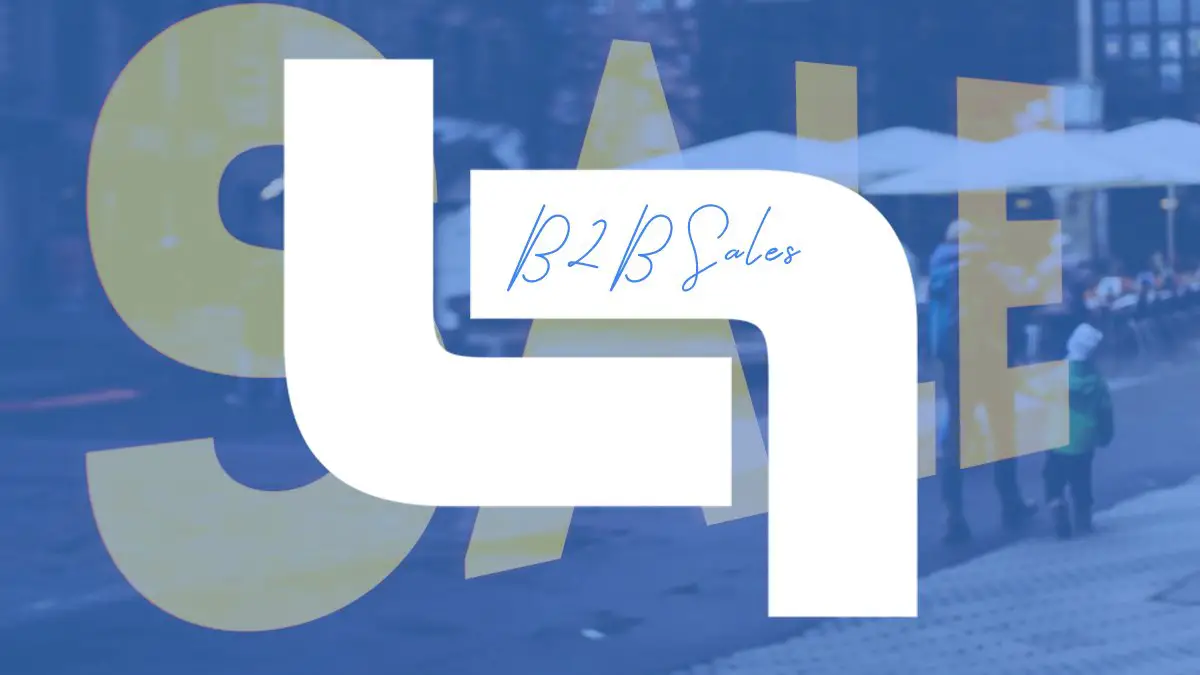The skill of relationship building has always been at the core of successful B2B sales, where the customer journey to closing a deal is thornier and longer. For many, remote sales and the B2B sector are incompatible, limited to the most inefficient format — cold calls and emails.
The Covid-19 pandemic showed everyone that remote selling in the business-to-business segment is not only possible but can be more effective. The main game-changer in the sales process was, of course, video communication. Let’s discover its secrets and how video conferencing sales work in B2B.
B2B sales vs. B2C sales: What’s the difference in approaches?
Before we begin, let’s understand the difference between B2B and B2C sales. Business to business involves a commercial relationship between two companies. B2B sales are the process by which B2B companies engage decision makers in other companies to sell products or services. It usually implies high prices and long and complex sales cycles.
Business-to-customer is the commercial interaction between a company and individual buyers. It is usually retail sales of any goods and services – coffee, subscriptions to services (iTunes, Bookmate, Google Drive), movies, cosmetics, automotive supplies, etc. B2C is focused on individual consumers and has a short and simple sales cycle.
B2B focuses primarily on outbound sales. Sales reps act more as brand ambassadors, marketers, and problem solvers but rarely participate in buying and selling transactions. Thus, they directly reach many potential customers using a wide range of software, including video conferencing tools, CRM systems, and sales enablement services.
Unlike B2B, B2C sales rely primarily on marketing to spread brand awareness, raise potential customers’ awareness, and attract buyers. Because the sales process is faster, B2C sales reps spend most of their time on the actual sale rather than product discussions or follow-up communications with potential customers.
How have video conferences changed B2B sales?
Technological development has significantly changed potential buyers’ behavior patterns, even in the B2B segment. Now, companies and decision-makers can search for goods and services just as they search for the things they need in the B2C segment. Do you need a software development studio?
You’re not likely to fly all the way to Silicon Valley and compare prices from office to office. You will open Google and LinkedIn, pick the options you’re most interested in, contact them, and negotiate until you get the best offer.
What’s more, you’ll do it all online through texting and video calls. Video conferencing tools help businesses create virtual meeting rooms with whiteboards, present their solutions, demonstrate goods, and negotiate and collaborate with their potential clients, just like during face-to-face meetings or even better. Both sides cut the costs of traveling and save their time.
Companies benefit from video calls in the following ways:
- cut expenses
- double the number of meetings with prospects due to time saved on traveling
- the follow-up process is simplified — you can book a meeting for the next day
- regular video communication strengthens relationships with potential and existing customers
- ability to use analytical tools within video conferencing software to improve sales performance
- use of video call recordings for self-learning and failure analysis
- video enables recognizing emotions through body language and facial expressions and reacting accordingly
- the use of video conferencing tools not only to communicate with customers but also to conduct online staff training and educational workshops
Together, they increase the number of closed deals and boost the company’s profitability.
How can you improve B2B sales with video conferencing?
Gong.io conducted a study that showed that companies that used video 41% more than audio got more deals closed. This shows the effectiveness of using video tools in B2B sales. However, one app or platform isn’t enough for success. Let’s consider what your sales managers should do to boost closed deals.
- They should prepare for an online video call with a customer the way they would for an offline meeting. Managers should offer an agenda for their conversation and share it with the interlocutor.
- Adherence to the dress code. No one will go to an important meeting in pajamas or home clothes. An online video call implies an appropriate appearance.
- Create an atmosphere. While many video conferencing apps offer a background replacement feature, we recommend preparing your workspace and checking that the background won’t cause any misunderstandings. It’s essential to check the lighting and make sure there won’t be any sound disturbances — they should ask their family to keep the noise down if the employee is working from home and turn off notifications on their phones.
- Technical preparation. Before starting the call, it’s important to check the Internet connection, camera, and headset. It is highly unpleasant to start the first acquaintance with a malfunctioning microphone or to postpone a meeting because of the slow Internet.
- Availability of required content. Employees should prepare all the documents they may need during the call — product presentations, videos, showcases, other customers’ reviews, graphs, and even agreement templates. These should be on hand so the sales manager can share the screen and show the right content.
- The conversation should begin with a brief discussion of your call plan. The potential customer may want to discuss additional aspects, and you’ll have time to think through your answers.
- Stick to the agenda and maintain eye contact. Zoom fatigue is real, and long video calls can be tiresome. The optimal call time is 20 minutes. During this interval, your sales manager should pitch your services or products. That’s why it’s important not to be distracted.
- Etiquette during group calls. During B2B video sales calls, more than two decision-makers can participate. Your sales managers should turn off the microphone while the other person on the call is speaking so that possible background noise doesn’t interfere with the communication.
- Record the call. This feature will allow your employees to avoid distracting themselves with notes and write a quality follow-up letter. They can return to the recording at any moment, analyze their actions, and plan their next steps.
- Analysis of non-verbal signals. Video calls allow your employees to read non-verbal cues from your potential customers. They should also be mindful of their facial expressions and body language and control them.
- End the call with a call to action. Give your potential client the next steps of your collaboration, and when the call is over, write a follow-up letter with a summary of everything you have discussed.




